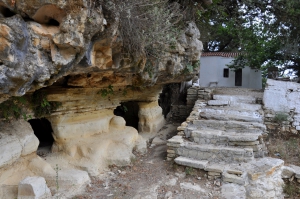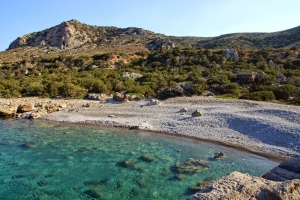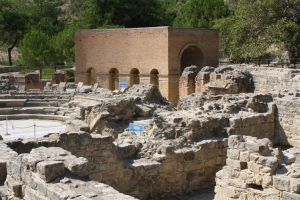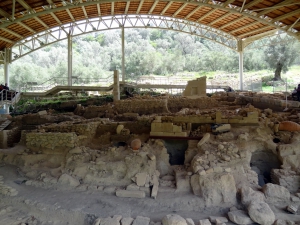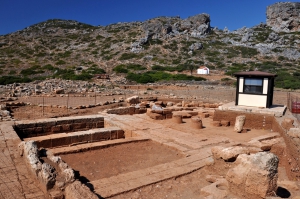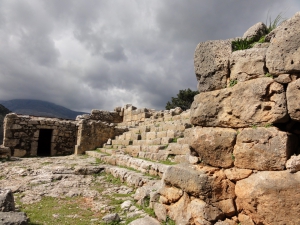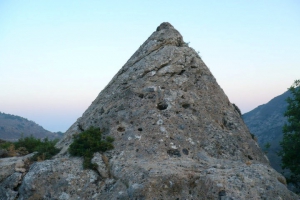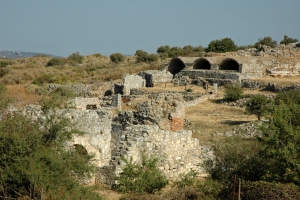Ancient Lappa was built near the current town of Argyroupolis, located 27km south of Rethymno. The area is now famous for its springs with waterfalls, its old mills and the lush green landscape that attracts thousands of visitors each year.
The Lake of Krios or Viena is located 10km west of Paleochora and 90km south of Chania. The beach is on the part of the European footpath E4 that links Paleochora and Elafonisi.
The archaeological site of Gortys (or Gortyna) is located 45km south of Heraklion, near the village of Agii Deka and next to the road connecting Agii Deka with Mires. The town covered a large area along the river Mitropolianos (or Litheos) with vast olive groves.
Ancient Eleftherna is located 25km southeast of Rethymno, close to the Monastery of Arkadi. The town is the most important archaeological site in the prefecture of Rethymno, which has not fully been excavated and it is expected to give archaeologists many more discoveries. The first organized excavations here started in 1985 by the University of Crete.
The ancient town of Falasarna (or Phalasarna) is located at the west base of the peninsula Gramvousa and was one of the major towns of Crete during the Hellenistic Era. The city was famous for its port, the only natural harbor in western Crete, built in a small lagoon.
The name Lato is taken after the Dorian pronunciation of the goddess Leto, who probably was worshiped here. However, the patron of the city was the goddess of childbirth, Eileithyia, who is depicted on the coins of Lato. moverer in Lato was born the admiral of Alexander the Great, Nearchus (360 to 312 BC).
Near the settlement Moni, Selino Province, we meet a very mysterious monument, unique in Crete. It is a small conical pyramid with a circumference of 16m and a height of 4.6m, which is carved. The interior has a carved room with dimensions 2.20m x 2.10m and height 1.40m.











